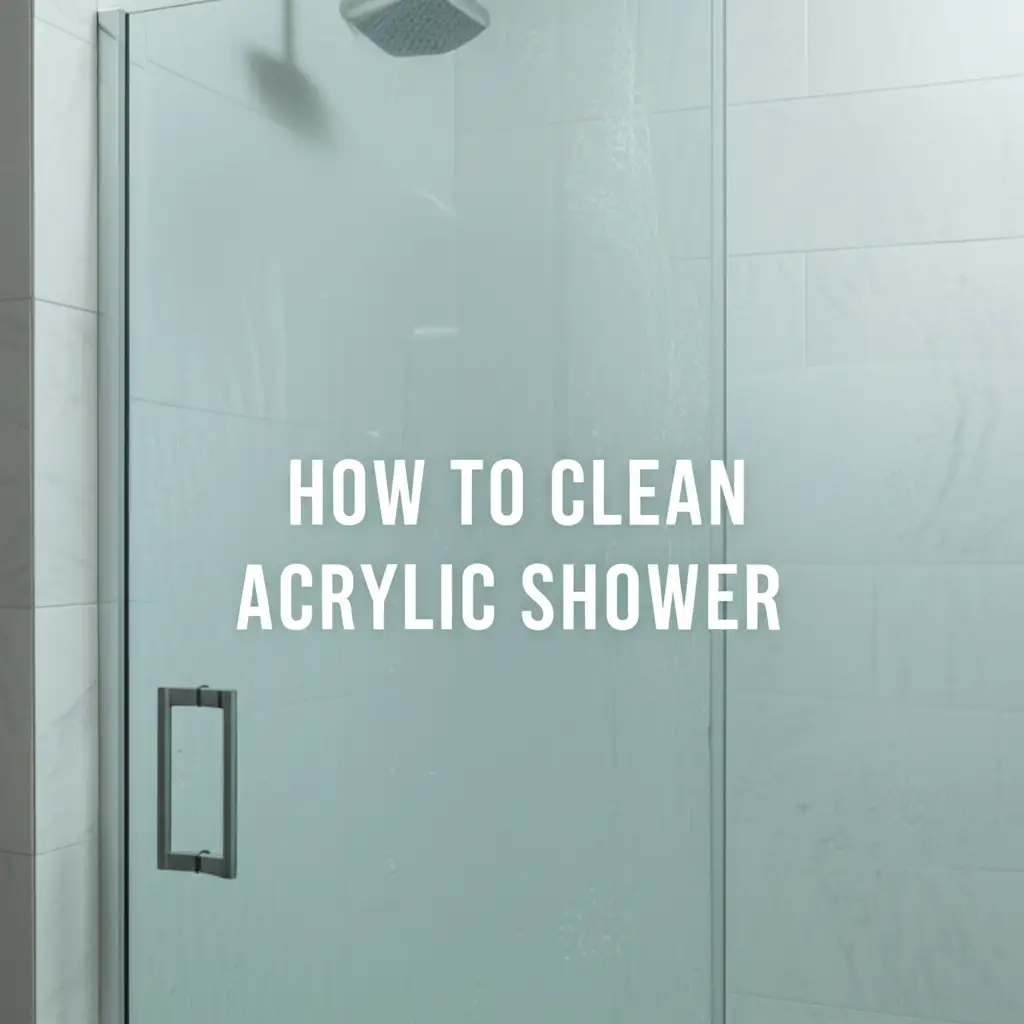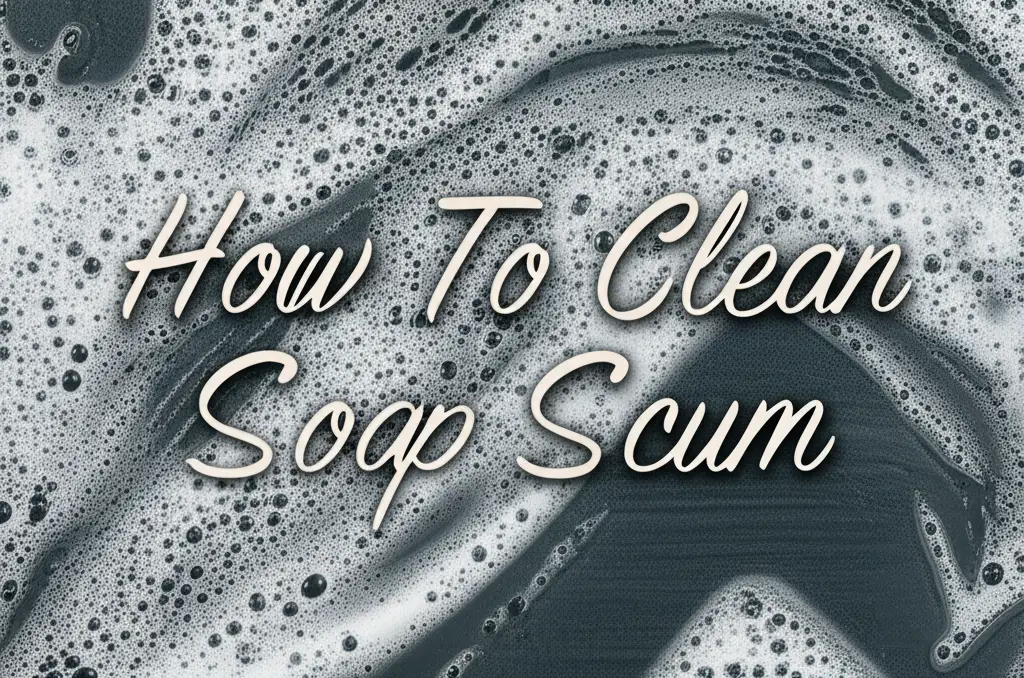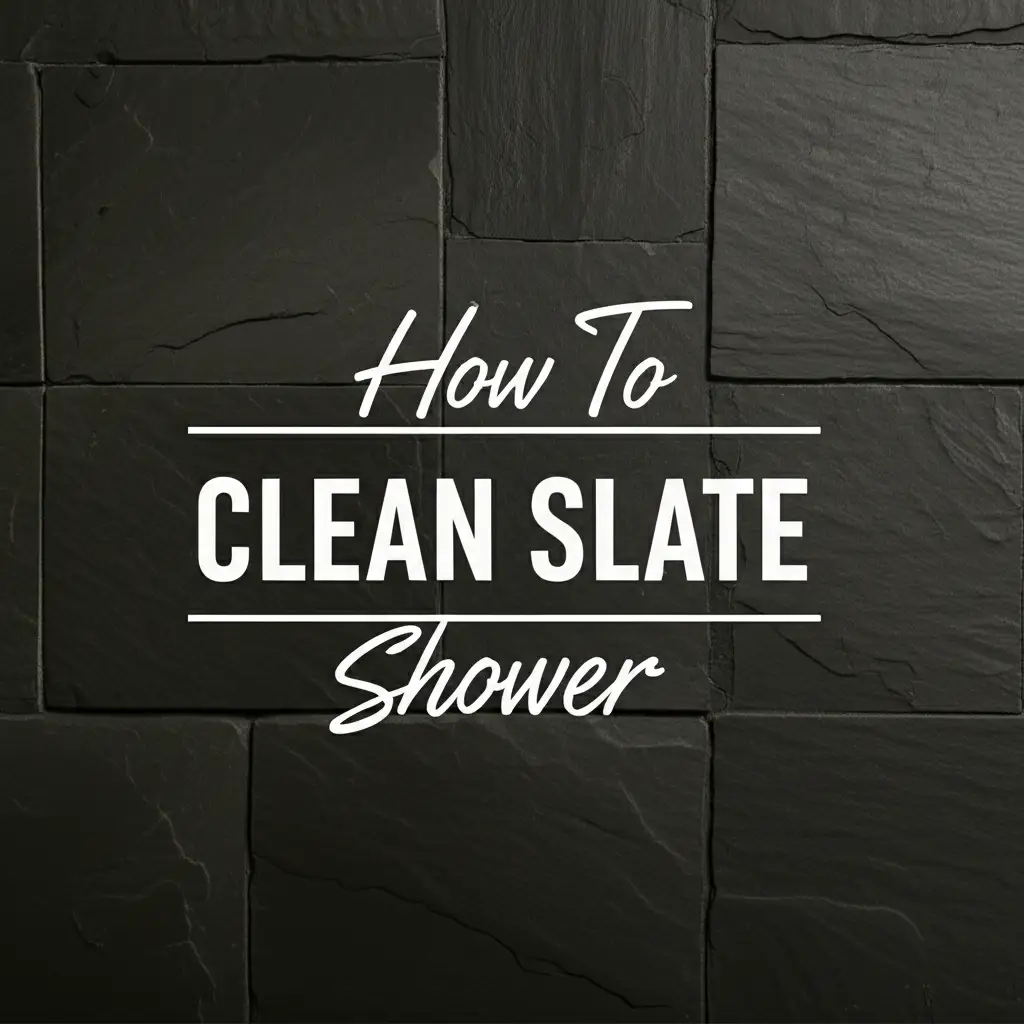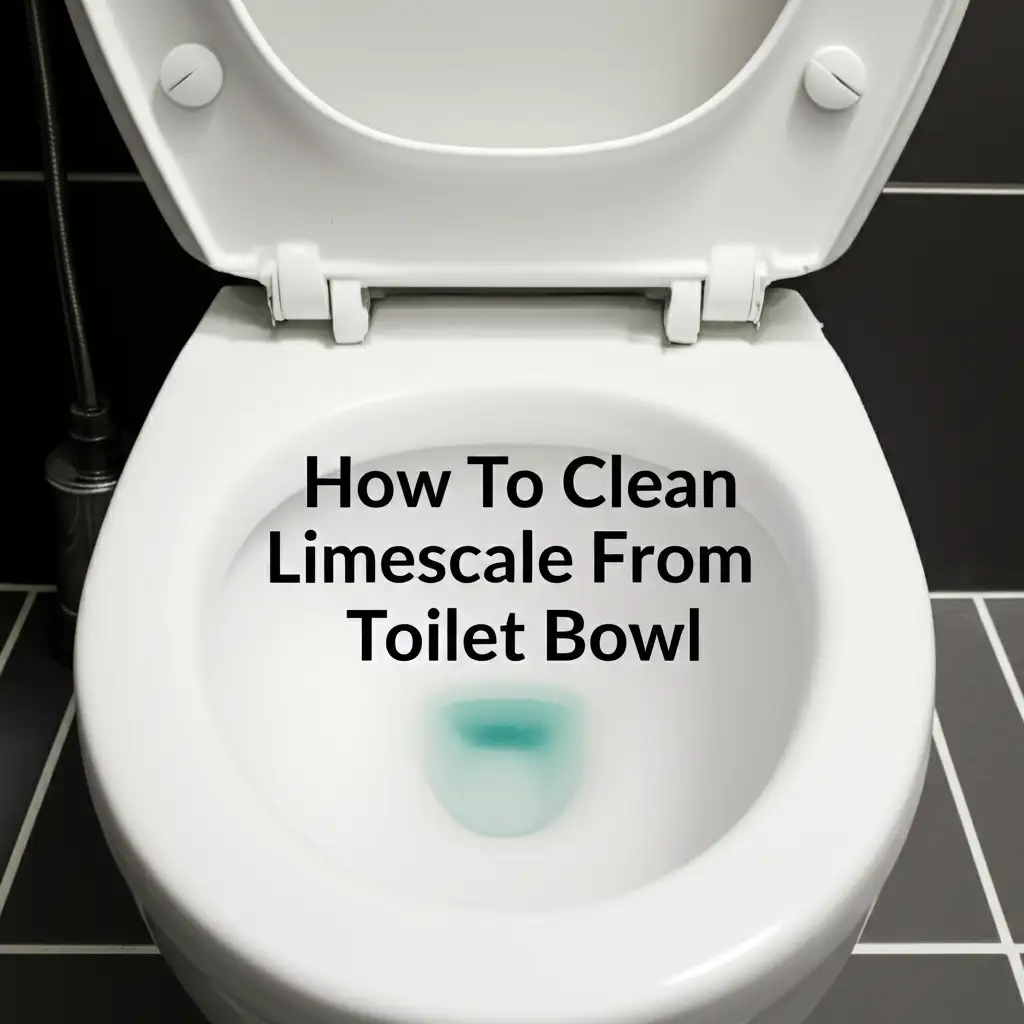· Home Cleaning · 13 min read
How To Clean Acrylic Shower

Clean Your Acrylic Shower: A Simple Guide
Is your acrylic shower looking a little dull or stained? Many people struggle to keep acrylic surfaces looking new. This is a common issue, but a sparkling clean acrylic shower is possible. You just need the right approach and gentle cleaning products.
Acrylic showers are popular because they are durable and look good. However, they scratch easily and can stain if you use harsh cleaners. Proper cleaning maintains the shower’s shine and extends its life. This article gives you simple, effective ways to clean acrylic shower surfaces. We will cover daily cleaning, stain removal, and important tips for preventing damage. I will show you how to safely clean your acrylic shower so it stays beautiful for years.
Takeaway
- Always use soft cloths and non-abrasive sponges.
- Opt for mild, non-toxic cleaning solutions like dish soap, vinegar, and baking soda.
- Clean your acrylic shower regularly to prevent tough buildup.
- Rinse thoroughly after every cleaning session.
- Avoid harsh chemicals and abrasive tools to prevent scratches and damage.
Cleaning an acrylic shower means using gentle, non-abrasive cleaners and soft cloths. This approach prevents scratches and maintains the surface’s shine. Regular cleaning helps avoid the buildup of soap scum and hard water stains, keeping your shower looking fresh.
Understanding Acrylic Shower Surfaces
Acrylic is a specific type of plastic. It is popular for shower units because it is lightweight and durable. Acrylic surfaces have a smooth, non-porous finish. This makes them resistant to mildew and easy to clean.
However, acrylic also has a soft surface. This softness makes it prone to scratches from abrasive cleaners or tools. Using the wrong product can cause permanent damage. Strong chemicals, like bleach or ammonia, can dull the surface or even cause discoloration. I always check product labels to ensure they are safe for plastic or acrylic. Understanding this material helps you choose the correct cleaning method. You want to clean the surface, not harm it. For more ways to protect your shower’s finish, learn how to clean acrylic without scratching. Acrylic is a plastic, so many tips for cleaning plastic showers also apply here. You can learn more about general plastic cleaning by reading how to clean plastic shower surfaces.
Essential Gentle Cleaning Supplies
Using the right tools and products is key when you clean an acrylic shower. You must avoid anything that can scratch or dull the surface. This means no harsh chemicals or abrasive materials. I always gather my supplies before starting.
First, you need soft cloths. Microfiber cloths work very well because they are gentle and absorbent. You can also use a soft sponge or a non-abrasive scrubber. Never use steel wool, abrasive pads, or brushes with stiff bristles. These will scratch your acrylic.
For cleaning solutions, stick to mild options. Dish soap is a great choice for general cleaning. You can mix a few drops with warm water. White vinegar is excellent for cutting through soap scum and hard water stains. Mix it with water for a diluted solution. Baking soda also works wonders as a gentle abrasive paste for tough spots. You can read more about using how to clean shower with vinegar and how to clean shower with baking soda in separate guides. These simple household items are safe and effective. Avoid industrial cleaners or those with strong acids or bases. These can damage your acrylic over time.
Your Routine for a Sparkling Acrylic Shower
Establishing a regular cleaning routine keeps your acrylic shower looking its best. This prevents dirt and grime from building up, making deep cleaning easier. I follow a simple two-part routine: daily maintenance and weekly deep cleaning. Consistency makes a big difference.
Daily Maintenance
After each shower, take a moment to do a quick wipe-down. This simple step prevents soap scum and hard water spots from forming. Rinse the entire shower surface with warm water. This washes away loose dirt and soap residue.
Then, use a squeegee to remove excess water from the walls and door. If you do not have a squeegee, a clean, dry towel works too. Drying the surface stops water spots. This quick action saves you a lot of effort later. It also helps keep your shower clean between deeper washes.
Weekly Deep Clean
Once a week, give your acrylic shower a more thorough cleaning. Start by rinsing the shower with warm water. This helps loosen any dirt. Next, fill a spray bottle with a solution of mild dish soap and water. I use about one tablespoon of dish soap per gallon of warm water. Spray the entire acrylic surface, ensuring good coverage. Let the solution sit for about 5-10 minutes. This gives the soap time to break down grime.
After waiting, use a soft cloth or a non-abrasive sponge to wipe down all surfaces. Work in small sections, wiping away soap scum and dirt. Pay attention to corners and edges where grime might hide. Once clean, rinse the shower thoroughly with warm water. Make sure no soap residue remains. Finally, dry the shower walls and floor with a clean towel or squeegee. This helps prevent new water spots. A consistent weekly routine keeps your acrylic shower bright and clean.
Removing Stubborn Stains: Soap Scum and Hard Water
Soap scum and hard water stains are common problems in showers. They can make your acrylic surface look dull. Luckily, you can remove them safely from acrylic. You just need the right products and a bit of patience.
For light to moderate soap scum, a white vinegar solution works well. Mix equal parts white vinegar and water in a spray bottle. Spray the affected areas generously. Let the solution sit for 15-20 minutes. The acidity in the vinegar helps break down the soap scum. After soaking, wipe the area with a soft cloth or non-abrasive sponge. Rinse thoroughly with warm water to remove all vinegar residue. You might need to repeat this process for tougher spots. This method is effective for the entire shower, especially the bottom. Learn more about cleaning the how to clean bottom of shower.
For hard water stains, which often appear as white, chalky marks, baking soda is very effective. Make a paste by mixing baking soda with a small amount of water. Apply this paste directly to the hard water stains. Let the paste sit on the stains for about 30 minutes to an hour. The baking soda will gently lift the mineral deposits. After it sits, gently scrub the paste with a soft cloth or sponge. Do not scrub too hard, as baking soda is a mild abrasive. Rinse the area completely with warm water. You can combine vinegar and baking soda for extra power. Spray vinegar first, then apply baking soda paste over it. The fizzing action helps lift stubborn stains. Always rinse your shower well after using any cleaning solution. This removes all product and prevents any new buildup.
Safely Removing Mold and Mildew from Acrylic
Mold and mildew can appear in any shower, including acrylic ones. They thrive in damp, warm environments. It is important to remove them promptly to prevent them from spreading. Using the right products ensures you do not damage your acrylic surface.
For light mold and mildew, a simple vinegar solution often works best. Mix equal parts white vinegar and water in a spray bottle. Spray the moldy areas liberally. Let the solution sit for at least an hour, or even longer for tougher spots. Vinegar is a natural disinfectant and mold killer. After soaking, scrub the area gently with a soft brush or a non-abrasive sponge. The mold should wipe away easily. Rinse the area thoroughly with warm water afterwards. This method helps clean the mold without harsh chemicals. For a deeper dive into general mold cleaning, refer to how to clean mold in shower.
For more persistent mold or mildew, especially in crevices like caulk lines, a hydrogen peroxide solution can be effective. Mix one part hydrogen peroxide with two parts water. Apply this solution to the affected areas. Let it sit for about 10-15 minutes. Hydrogen peroxide is a powerful oxidizing agent that kills mold spores. Always test it on a small, hidden area first to ensure it does not affect the acrylic color. Then, scrub gently and rinse well. You should never use bleach on acrylic. Bleach can cause discoloration and damage to acrylic surfaces. Remember, proper ventilation during cleaning is also important. Keeping your shower dry helps prevent mold from returning. Pay close attention to caulk. Mold often grows on caulk. Learning how to clean caulking in shower is useful for this reason.
Preventing Damage and Buildup in Acrylic Showers
Preventing issues is easier than fixing them. A few simple habits keep your acrylic shower looking great for longer. These steps help avoid scratches, buildup, and the need for intense cleaning. I find that prevention saves a lot of time and effort.
First, ventilation is key. After you shower, leave the bathroom door open or run the exhaust fan for at least 15-20 minutes. This removes moisture from the air. Less moisture means less chance for mold and mildew to grow. It also helps surfaces dry faster, preventing water spots.
Second, use a squeegee daily. After every shower, quickly squeegee the walls and door. This removes water droplets before they dry and leave mineral deposits or soap scum. If you do not have a squeegee, a soft towel works too. This quick action takes less than a minute but makes a huge difference. It stops hard water stains and soap scum from forming, which are difficult to remove later. This is also a good tip for preventing scratches as it reduces the need for heavy scrubbing. Regular squeegeeing is a top tip for how to clean acrylic without scratching.
Third, avoid leaving soap bars directly on the acrylic surface. Soap can leave residue that is hard to remove and can even etch the surface over time. Use a soap dish or a shower caddy to keep soap off the acrylic. Similarly, use liquid soaps or shower gels that rinse away cleanly. Regular rinsing after each use also helps. Simply spray the shower walls with warm water for a few seconds after you finish. These small habits protect your acrylic shower. They keep it sparkling and clean without much effort.
What to Avoid: Harmful Products for Acrylic
When you clean an acrylic shower, knowing what not to use is as important as knowing what to use. Many common household cleaners can severely damage acrylic surfaces. Using the wrong product can lead to scratches, discoloration, or permanent dullness. I always advise extreme caution.
First, never use abrasive cleaners. This includes powdered cleansers, scrubbing pads, or brushes with stiff bristles. Products containing pumice, silica, or similar harsh particles will scratch acrylic. These tiny scratches accumulate over time. They make your shower look cloudy and old. Even “soft scrub” products can be too abrasive for acrylic. Stick to soft cloths and sponges only.
Second, avoid harsh chemical cleaners. Bleach is a major culprit. While powerful, bleach can cause acrylic to yellow or become brittle over time. It can also weaken the material. Ammonia-based cleaners, like some glass cleaners, also pose a risk. They can dull the acrylic’s shine and even degrade its surface. Similarly, steer clear of acetone, paint thinner, or strong drain cleaners. These chemicals can melt or seriously damage acrylic. For example, some people try to use how to clean shower with bleach on other shower types, but it is dangerous for acrylic.
Third, do not use oil-based cleaners or waxes unless specifically stated as safe for acrylic. These can leave a residue that attracts dirt and makes the surface slippery. They can also interact poorly with the acrylic material itself. Always read product labels carefully. Look for phrases like “safe for acrylic” or “non-abrasive.” When in doubt, stick to mild dish soap, white vinegar, or baking soda. These are tried-and-true, safe options that will keep your acrylic shower beautiful without any risk of damage. Your shower will thank you.
FAQ Section
Can I use bleach on my acrylic shower?
No, you should never use bleach on an acrylic shower. Bleach is too harsh for acrylic surfaces. It can cause discoloration, turning the acrylic yellow over time. It can also make the material brittle. This leads to cracks or damage. Always use gentler alternatives like white vinegar or hydrogen peroxide for cleaning.
How do I remove scratches from acrylic?
Removing scratches from acrylic is possible for minor marks. You can use a fine-grit automotive polishing compound or a specialized acrylic scratch remover kit. Apply a small amount to a soft cloth and rub gently in a circular motion. This buffs out the scratch. Rinse the area thoroughly afterwards. For deep scratches, professional help may be needed.
What is the best homemade cleaner for acrylic?
The best homemade cleaner for acrylic showers is a solution of white vinegar and water. Mix equal parts of each in a spray bottle. For tougher spots, a paste of baking soda and water works well. These natural ingredients clean effectively without damaging the acrylic surface. They are safe and gentle options.
How often should I clean my acrylic shower?
You should perform a light cleaning of your acrylic shower daily, by rinsing and wiping it down. A more thorough deep clean is recommended once a week. This regular maintenance prevents soap scum and hard water buildup. It also keeps your shower looking fresh and extends its lifespan.
Can I use a magic eraser on acrylic?
No, I do not recommend using a Magic Eraser on acrylic showers. Magic Erasers contain a very fine abrasive material. While they seem soft, they can create micro-scratches on delicate acrylic surfaces. These scratches can dull the finish over time. Stick to soft microfiber cloths or non-abrasive sponges instead.
Why does my acrylic shower look dull?
Your acrylic shower may look dull due to soap scum buildup, hard water deposits, or using harsh, abrasive cleaners. Harsh cleaners can create tiny scratches that scatter light, making the surface appear cloudy. Regular cleaning with gentle products and drying after each use helps maintain the shine and prevents dullness.
Conclusion
Keeping your acrylic shower clean and shiny is easy with the right methods. You now know how to clean acrylic shower surfaces safely and effectively. We covered how acrylic differs from other materials and why gentle care is so important. We also explored essential tools and products. Remember, mild dish soap, white vinegar, and baking soda are your best friends for an acrylic shower.
Regular cleaning prevents soap scum and hard water stains. Daily rinsing and wiping, plus a weekly deep clean, will keep your shower looking new. Always avoid harsh chemicals and abrasive scrubbers. These can cause permanent damage to your acrylic. By following these simple steps, you extend the life of your shower and maintain its beautiful appearance. Take care of your acrylic shower, and it will serve you well for many years. Start your new cleaning routine today for a sparkling bathroom!
- acrylic shower
- shower cleaning
- bathroom cleaning




